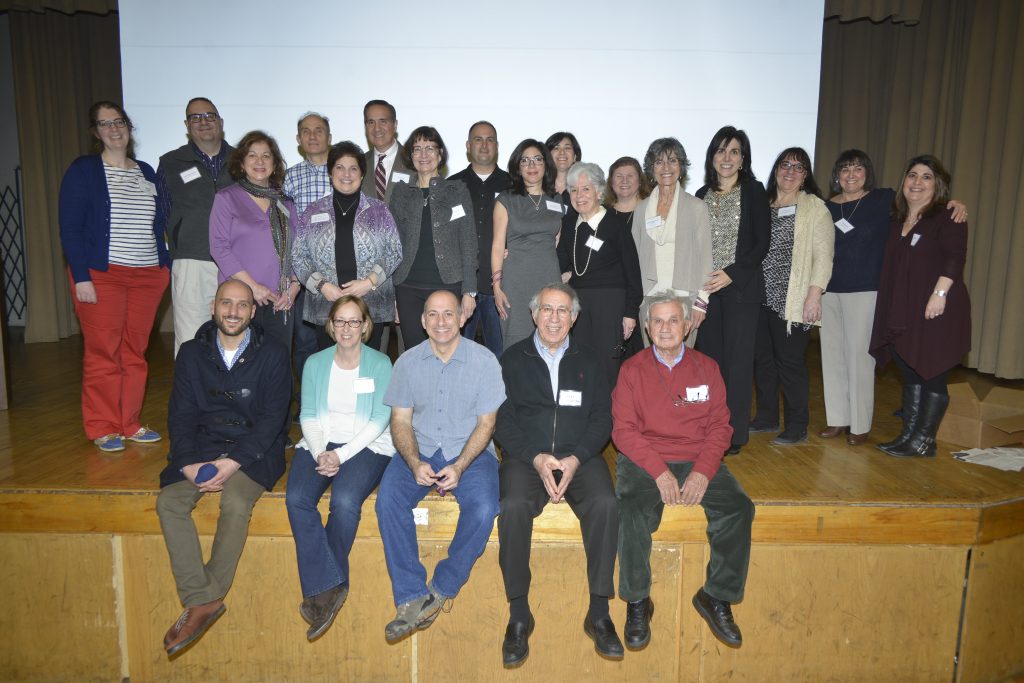The first Armenian Genealogy Conference was held at the Armenian Cultural and Educational Center (ACEC), in Watertown, Mass., on the weekend of April 9-10. More than 300 people attended the two-day conference. Some came from as far as Vancouver, Canada, while two participants flew in from Great Britain.

The program began Saturday with a welcome by the three conference organizers, Tracy Rivest Keeney, Mark Arslan, and George Aghjayan.
Keeney, creator of the Armenian Genealogy Facebook page, led the first presentation, covering the sources most commonly available to genealogists in the United States. She used real cases in highlighting the valuable information that can be gleaned from the sources. Her talk supplied an important foundation, especially for those just beginning their family tree research.
The next presenter, Arslan, provided background on his family research and its evolution to become the Armenian Immigration Project. Initially devoted to immigrants from Keghi, the website has become an extensive database for all immigrants to the United States. Arslan gave examples of the ways to search the databases as well as to link individuals to various records. He also explained how others can help in transcribing records.

Vahe Tachjian, director of Houshamadyan, spoke of the project’s aim to “reconstruct Ottoman Armenian town and village life.” He gave examples of memory items that supply important context, particularly for genealogists. He also explained how people can help expand the project.
Then, both Houshamadyan and Project Save—the Armenian photograph archives and one of the sponsoring organizations of the conference—welcomed attendees to their booths, where participants shared their photographs, family trees, and other memory items, and learned about these two important Armenian institutions.
Following lunch, Luc Baronian, professor of linguistics at Université du Québec à Chicoutimi, spoke of the importance of the books, periodicals, and other information contained in the records of Armenian compatriotic unions. Using the examples of Gurin, Ourfa, Albustan, and Gesaria, Baronian detailed early census records, hand-drawn maps, post-genocide lists of villagers around the world, and survivor memoirs to highlight the richness of material available to genealogists.

The final speakers for the day were Janet Achoukian Andreopoulos and Stephen Kurkjian. Andreopoulos supplied a brief explanation of the different DNA tests available and the companies that offer them. Kurkjian and Andreopoulos then told the story of how a DNA test helped one woman identify her Armenian father. Andreopoulos walked the audience step-by-step through the process and methods she used to unearth the previously unknown father.
The final two hours on Saturday were devoted to networking and actual research. More than 12 volunteers from nearby Family History Centers of The Church of Jesus Christ of Latter-day Saints helped attendees with their own family research. In addition, based on the village origins of conference participants, photographs of the attendees were taken with others from the same region—the villages fell into 12 regions, and participants were divided into groups accordingly. DNA kits from Family Tree DNA were also made available at a discount.

The day-long program was video-taped by Roger Hagopian, well-known local filmmaker (“Destination Watertown: The Armenians of Hood Rubber” and “Memories of Marash”). The videos (14 parts) are available through the National Association for Armenian Studies and Research (NAASR) YouTube channel:
On Sunday, cosponsors Project Save, the NAASR, and the Armenian Museum of America (AMA) opened their doors to conference participants. Attendees learned more about the missions of the organizations, their extensive collections and resources, and the way they can be used by genealogists. Hamazkayin Boston and the Tekeyan Cultural Association also sponsored the conference. Given the tremendous success of the program, future conferences are currently being planned for other locations.

A slide-show of photographs taken by Kenneth Martin is also available online. (http://westernarmenia.weebly.com/armenian-genealogy-conference-2016.html).



Maybe if people from turkey with Armenian ancestors do dna, they can connect with Armenians elsewhere, to build up their family trees, and maybe find lost relatives..
This is already being done. It is a project that started in 2013. Once the situation is more stable in the region, it will pick up pace.
Kudos to all the organizers, those on hand who translated and searched family roots and the lively discussion among the many newly found relatives brought together via the DNA projects and this conference: unlayering the once thought unknowable. Quite a remarkable day!
Great turnout; am looking forward to the next conference.
My father, OKSEN GEORGE SISLIAN, was born in Tarsus, Turkey . His brother , Rev.Karekine Sislian, sister Perouz Sislian ,Father George and Mother Haiganoush escaped the Genocide and ended up in Cyprus. The past was painful for my father to speak of, so we have little knowledge of life in Tarsus and would be very interested in hearing from anyone who can shed light on this Christian family.
This was an amazing event. I am looking forward to the next one. Thanks to the organizers for their hard work and dedication!
Bravo and congrats to everyone who was involved in this project. Thank you all.